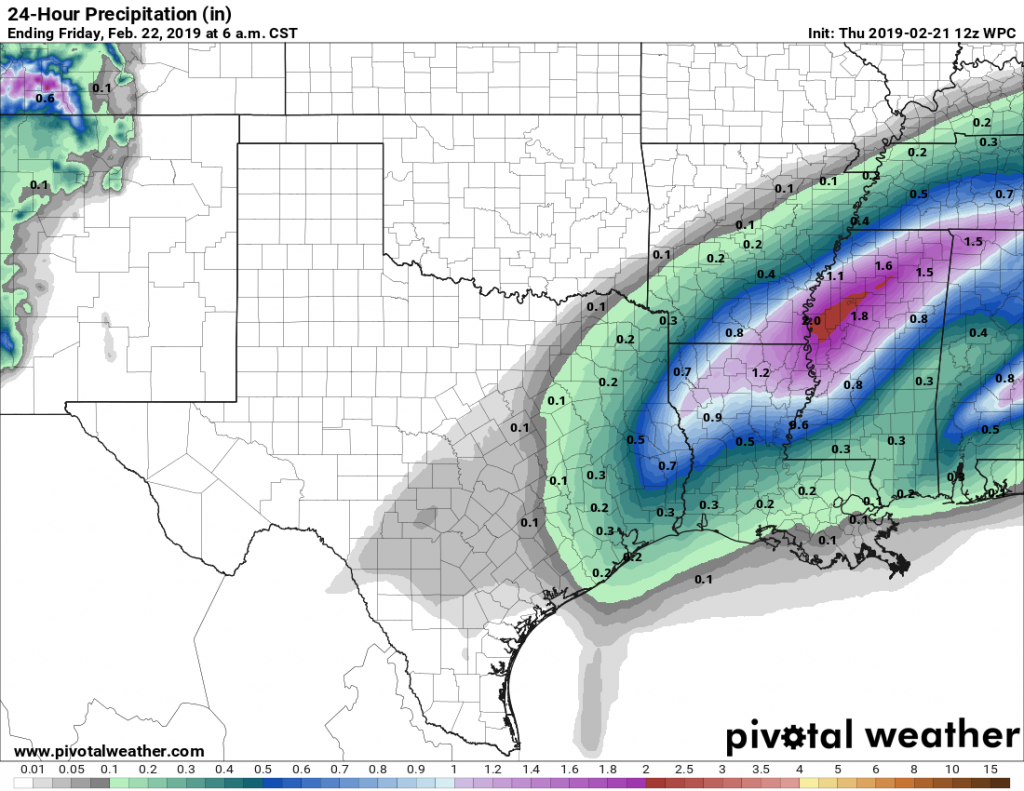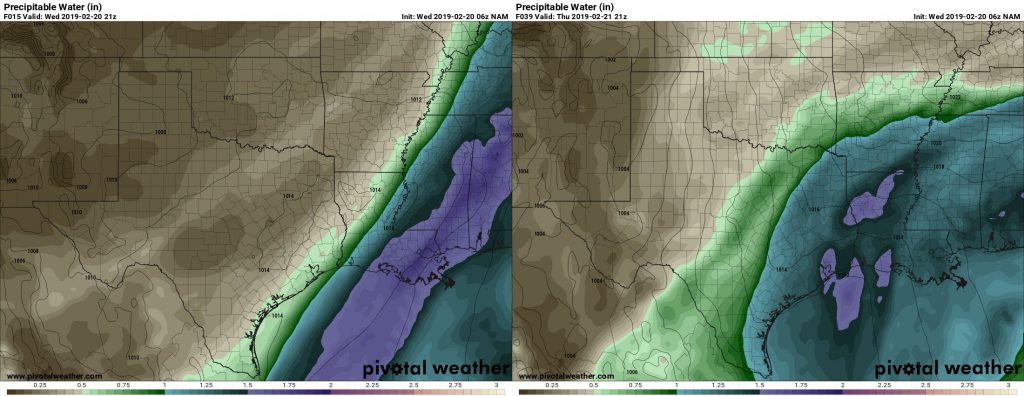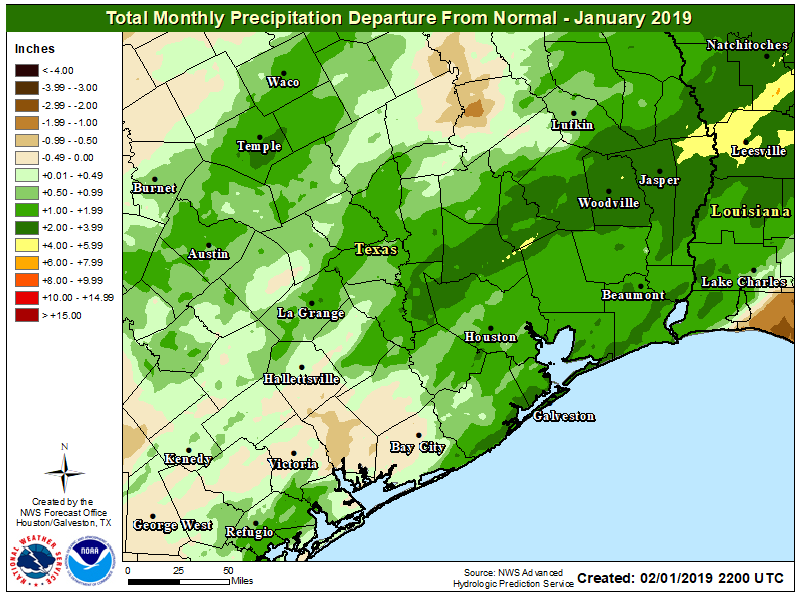The good news is that the worst of the weather the next couple days will likely miss the Houston area well to the northeast. The bad news is that we will still have multiple rain chances to contend with through tomorrow before we get on to the good stuff.
Today
While today should not be a washout, there will be plenty of shower activity around. Initially, showers are west of Houston near Katy and north up through Conroe.

As we go into this afternoon, I think we’ll see the focus of these showers shift east of I-45 and north of I-10. Thunderstorms will also be possible, but with the area likely to see some degree of atmospheric capping (“the cap,” as it’s often referred to, which is basically an atmospheric temperature inversion that inhibits thunderstorm growth) I don’t think we will see too much in the way of significant storms. That will be reserved for areas well north of Houston, up toward the ArkLaTex.
Yesterday was cold and drizzly. Today will begin similarly. We should see temps warm a bit further today though and manage at least the upper-60s in Houston, mid-60s in The Woodlands, and low-60s in the Brazos Valley. That being said, sometimes temperatures behave very stubbornly in these types of patterns, so there’s a definite slight chance we don’t get out of the 50s until later tonight. Keep the jacket handy.
For at least the 500th* time this month, fog is pestering the coast this morning once again.
*approximate

Dense fog is likely to hang along the coast and in the bays most of the day today. Exercise caution if you’ll be driving to or from those areas today.
Tonight
We will carry a continued chance of showers through the night, but no heavy activity is expected. It may be more mist or drizzle than anything, with a gradual transition toward showers. Fog will continue in the bays and along the coast, though it could begin to become a little more dispersed at times overnight as winds pick up a bit. Look for temperatures to hold steady or finally rise into the mid- to upper-60s if they haven’t gotten there this afternoon.



